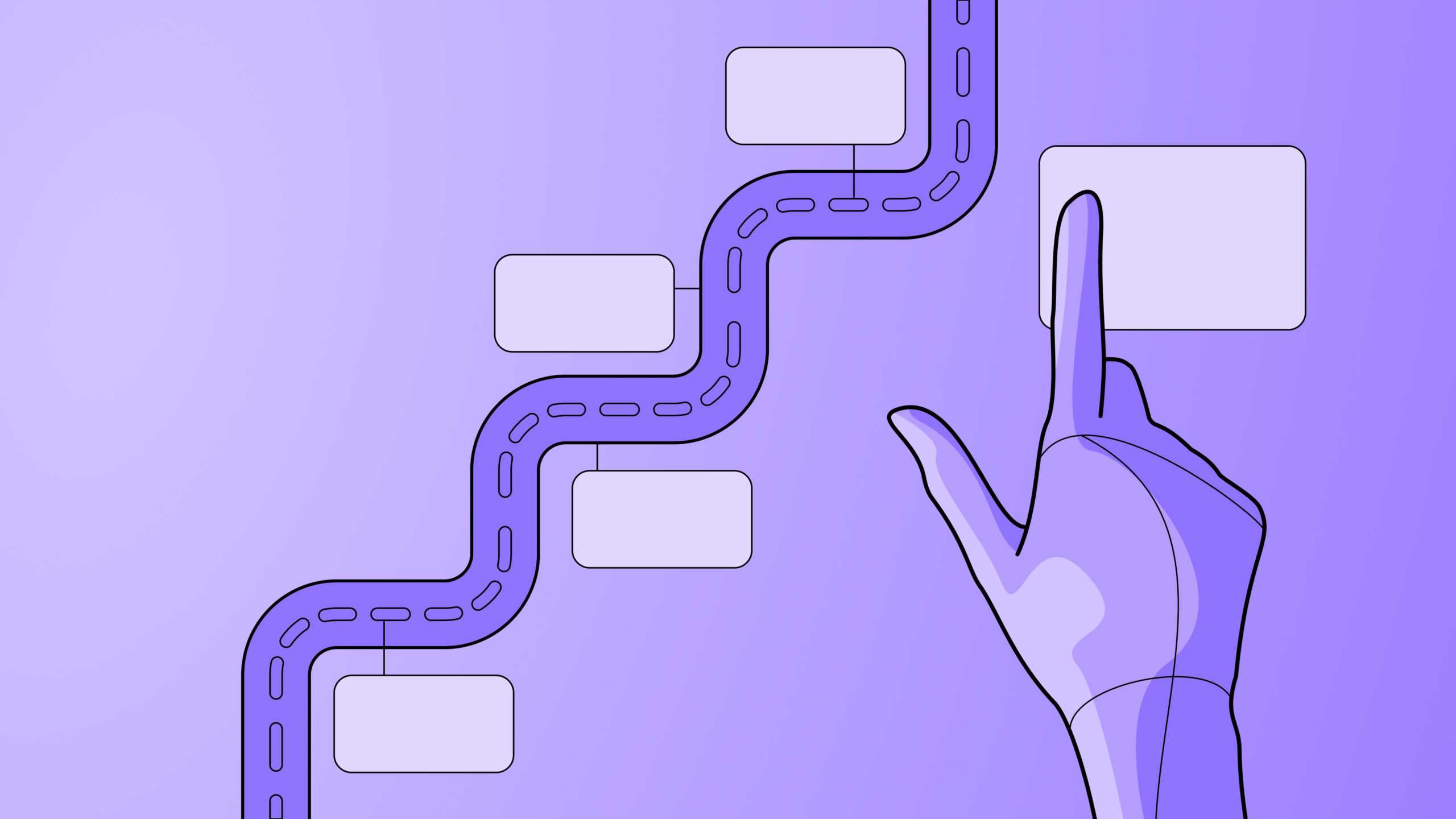

It’s no secret that startups are risky. With a limited budget, little time, and initial assumptions, you have to somehow build a product that will bring value to its users. Implementing the minimum viable product stage is often the most evidence-based way to efficiently validate your idea.
Because building a meaningful digital product requires not only time and money but also a team effort, including developers, designers, and the rest of the software development team, as well as users, stakeholders, and clients.
Why do startups need to begin with a minimum viable product? How important is MVP for a startup? And what is MVP lean startup? Let’s find out.
What MVP means
But let’s start from the basics. The term MVP stands for minimum viable product and is a basic model of a product, as simple as possible, with only core features that cater to the target audience’s needs. This product provides the team with the maximum amount of validated learning with the least effort. In other words, MVP concept is your value proposition that the customers respond to.
Fun fact: it was Eric Ries, who introduced the concept of the MVP as part of his Lean Startup methodology in his book “The Lean Startup“.
And even though it’s a basic version of a product, it still has the app’s core values: workability, usability, and visual appeal. Nothing is missed here. So, yes, MVP makes sense.
Common misconceptions about MVP
It’s not a PoC
A minimum viable product is not a proof of concept. In fact, MVP comes after the PoC stage. Why? Because PoC focuses on feasibility of the concept, while MVP’s goal is user experience. In other words, thanks to PoC we make sure that with the technology available, we’re able to turn this idea into reality.
It’s not a beta version
Even though both of them are about user feedback, a beta version is one of the last checks before the product release. This is when beta testers find the bugs, problems and other issues connected with UX, app reliability and more. Which in MVP is not the case.
Here, you deliver a new product with core functions to the target audience. It’s reliable and stable, just as any well-built digital product. That’s the ‘viable’ in the MVP. It means that the product should work reliably as the final product. In fact, we had many cases in which an MVP became the final version of the product. But more about it later.
Learn more about MVP from our article – Minimum Viable Product – What is an MVP? You can read about the overall benefits of the MVP approach, its development process, and the difference between minimum viable product, proof of concept, and a prototype.
MVP for startups – why it’s important to focus on the MVP?
Because, in reality, you know so little about the market. Through the lean startup stage, you get to know what functionalities the product should have, who is your target audience, what value proposition works best, how much your customers are willing to pay for your product, how to market your product and many more.
But without testing and MVP lean startup stage, you’re betting on your success. And in business, it’s not about that. After all, it’s your time and resources you’re putting on the table. Make it worth the wait.
Lastly, MVP is especially beneficial in IT sector. No matter what you create – a mobile app, website or other digital solution – you need users and their feedback. And the truth is, MVP is perfect for it.
The benefits
Including MVP phase in your process, allows you to:
- collect reliable feedback from users,
- create a user base and build a community of customers around the product,
- shift your focus to users – because in the end, it’s all about them,
- develop a product with the least amount of effort.


Why MVP and startups are a perfect fit
Let’s begin with the most obvious one: it’s great for startups because they usually have a limited amount of resources. Time, money, effort, you call it, but this is when MVP really passes its test. And because it’s a basic form of a product, all you care about is the core value proposition. In short, simplicity at its finest.
Also, MVP is a great way to validate the idea – see whether it sells, why it’s valuable, what can be done to draw more customers in. Plus, you can build an early user base thanks to giving the product to real customers.
Another benefit of the minimum viable product for startups is that it’s an easy way to collect user feedback and, at the same time, determine a clear roadmap for future features. This, in turn, can help you convince your investors, which gives you more “live” data for your pitch deck.
Plus, typically startups tend to look for funding – an MVP is a great way to quickly test the idea with minimal expenses and to already have a solid ground for investors.
Lastly, it’s a low-risk investment that can bring a high ROI. What else do you want?
Startup development phases
And if you’re still not convinced, let’s take a look at the startup development phases.
Formation
As you can see, during the formation stage, you get to work on the product’s mission, vision, and strategy. This is when you get to work out a fitting solution for an underserved need in the market.
Validation – lean startup methodology
Then, there’s finally a validation stage – lean startup. It’s time to focus on MVP development. Make the product basic, with only the core features to test the product/market fit.
All in all, the MVP development process aims to:
- comprehend the business market needs,
- unravel the missing opportunities,
- decide what functionalities to build.
But the ultimate goal here is to gather user feedback – does it cater to users’ needs? Once you have all the needed data, it’s time to pivot and iterate.
Growth – MMP
However, this is not the last startup development stage. The last one is about growth – to scale up the product. In other words, when you get positive user feedback on your product, the overall engagement is growing each week, and there is a higher percentage of active customers, then maybe it’s time to go from minimum viable product to minimum marketable product (MMP).
More about the MMP stage as well as the 3 reasons why startups fail and startup growth phases in my other article – When MVP is done – what’s next? Scale up!
Two cases of MVP development
Sometimes a minimum viable product is enough. Just like in the case of Spin Brands, UK’s #1 social media agency based in London. They sought to optimize their internal organizational structure by creating one app that would successfully replace all the others. In short, they wanted their own CMS system. After 3 months of working on a product, 2-day workshop, and 2 usability tests, we delivered an MVP that turned out to be a final product.
Learn more about our cooperation with Spin Brands from our case study.
And other times, an MVP is a great way to start. Here, I’m talking about Motarme project – the client had his initial software but it needed a rebuild from the ground up. But instead of fixing the product, Motarme decided to create an MVP with only core features. Our client needed value and that’s why we initially focused on MVP – to bring the most value to the users in the shortest amount of time.
Final words
Because of MVP, you get to see whether your product has market potential – is it something that your target audience wants? And, if so, it enables businesses to address market demands while being cost-efficient. There’s also the factor of user input, thanks to which you’re delivering a product that will actually sell and succeed.
Want to deliver an MVP? Book a meeting with Leo and let’s start your software development journey together.


Have a project in mind?
Let’s meet - book a free consultation and we’ll get back to you within 24 hrs.






